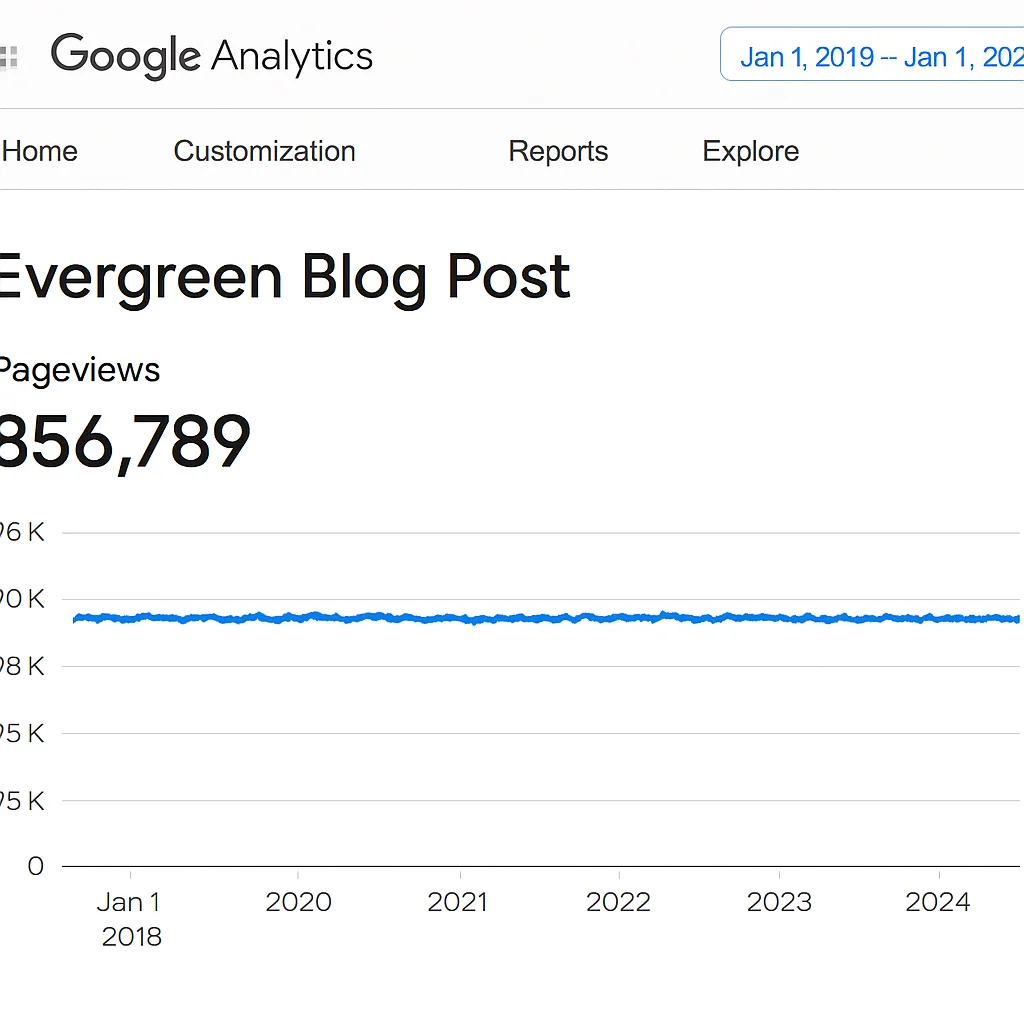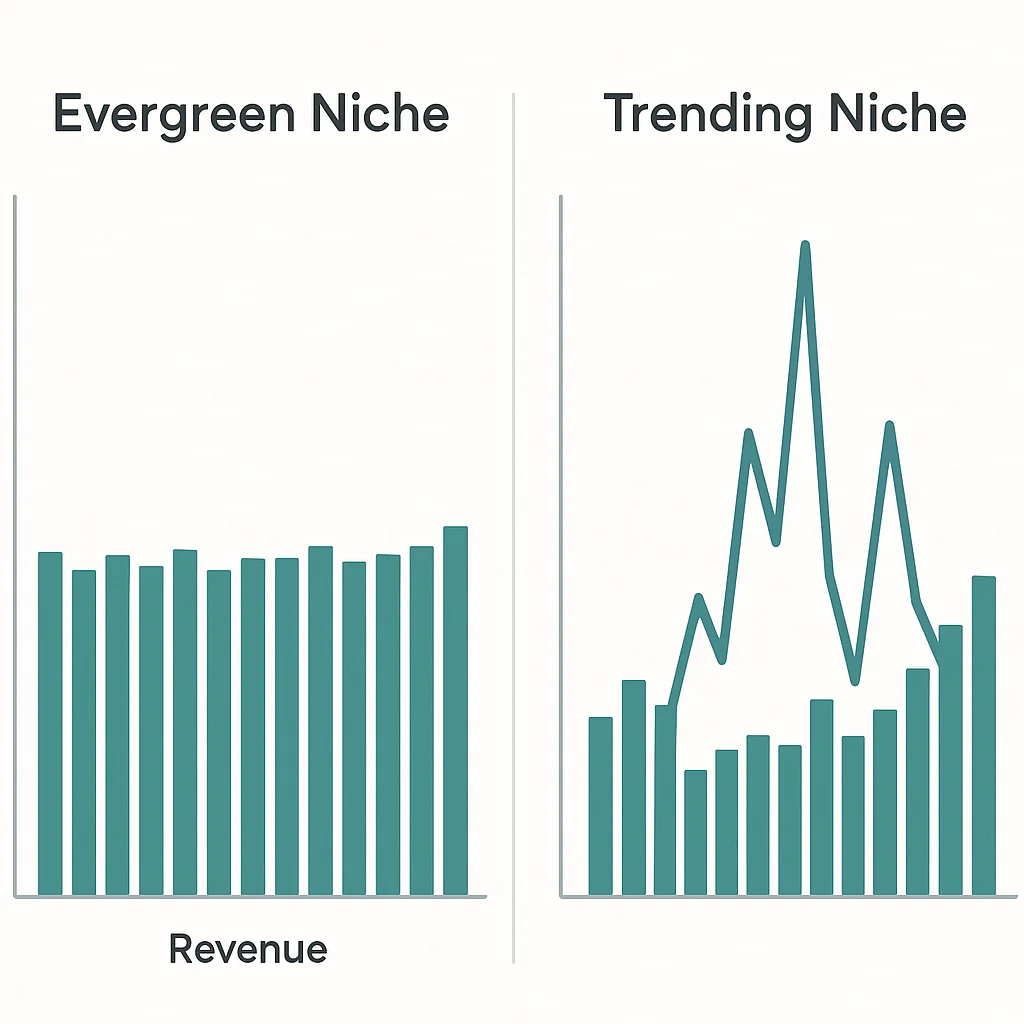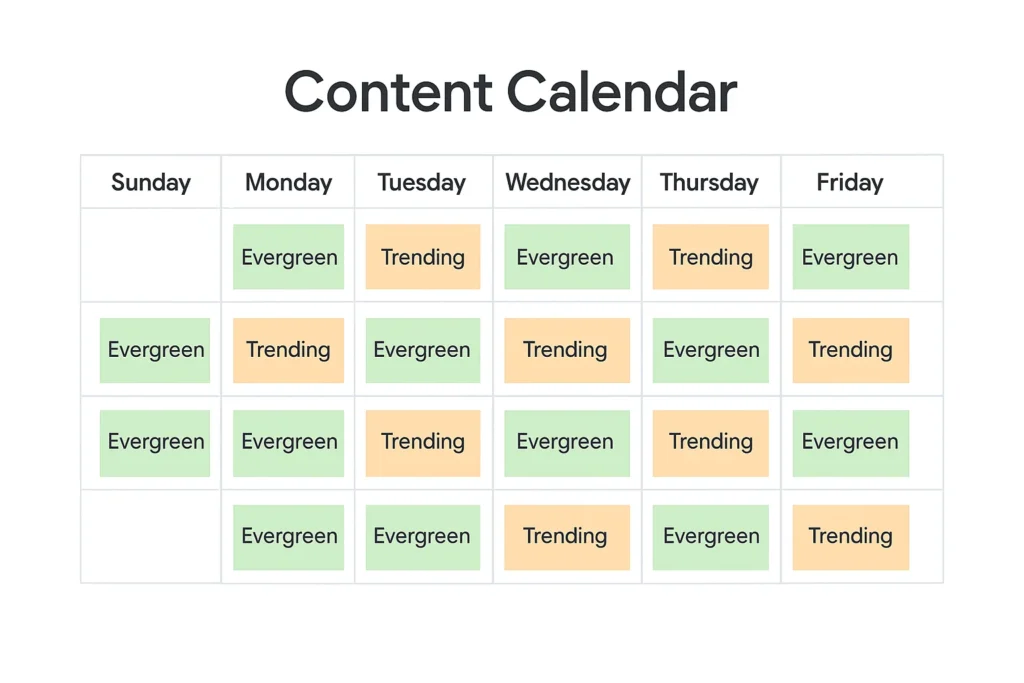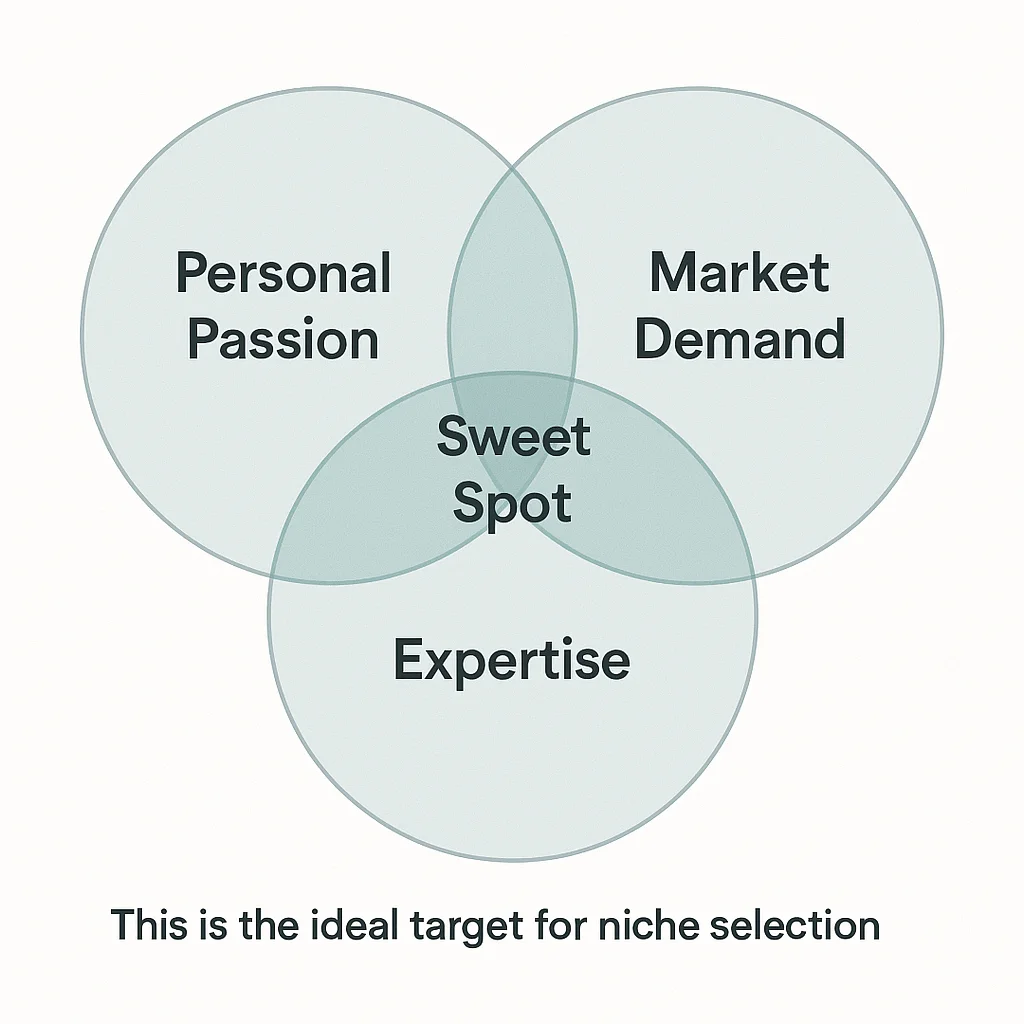The clock was ticking. I sat there, cursor blinking, about to launch my third blog. The same question haunted me again: should I build around timeless topics or chase what’s hot right now?
It’s the blogging dilemma that keeps digital entrepreneurs up at night. Evergreen niches offer stable, long-term traffic, while trending topics promise explosive growth. Choose wrong, and you could waste months creating content nobody will read in six months.
I’ve been in the blogging trenches for over 8 years now. I’ve seen trending niches explode overnight and fizzle just as quickly. I’ve also watched evergreen content steadily bring me traffic years after publishing. Both approaches have their place – but which one deserves your focus?
In this guide, I’ll walk you through everything you need to know about evergreen vs trending niches. You’ll discover:
- The exact criteria that make a niche truly “evergreen”
- How to identify trending topics with staying power (and avoid the one-hit wonders)
- My hybrid approach that leverages both strategies for maximum results
- Real traffic data comparing both niche types from my own websites
Whether you’re launching your first blog or pivoting an existing one, this niche selection strategy will help you build a sustainable content platform that stands the test of time.
Let’s dive into the ultimate battle of blogging strategies.

What Are Evergreen Niches? The Pillars of Sustainable Blogging
Defining Evergreen Content and Niches
Evergreen niches are the foundation of sustainable blog topics that maintain relevance regardless of season, year, or current trends. Think of them as the oak trees of the content world – they grow slowly but remain standing for decades.
What makes a niche truly evergreen? It addresses perennial human needs, questions, or problems that don’t fundamentally change over time. These timeless blog niches create content with extraordinary longevity – posts I wrote four years ago still generate consistent traffic today.
5 Examples of Timeless Blog Niches That Never Go Out of Style
After researching numerous niche market opportunities, I’ve identified these proven long-term niches:
- Personal finance (budgeting, investing, retirement planning)
- Health and wellness (nutrition, exercise, mental health)
- Relationships (dating, marriage, parenting)
- Home improvement (DIY, gardening, organization)
- Self-improvement (productivity, mindfulness, education)
These profitable niche markets consistently attract audiences because they address fundamental human concerns that never disappear.
The Stability Factor: Why Evergreen Content Provides Consistent Traffic
What makes evergreen niches particularly valuable for niche website success is their traffic stability. Unlike trending topics, they provide predictable, consistent traffic sources month after month, year after year.
Personal Experience: My first blog focused on personal productivity – a quintessential evergreen niche. After two years of consistent content creation, I generated over 120,000 monthly pageviews with minimal ongoing promotion. The content simply kept working. This content longevity became my passive income pipeline, consistently earning through affiliate marketing and digital products.

The Allure of Trending Niches: Riding the Wave of Popularity
What Makes a Niche “Trending” in the Blogging World
Trending niches represent the opposite approach to content strategy for bloggers. These are topics experiencing a sudden surge in interest due to current events, technological breakthroughs, or cultural phenomena. Trend-based blogging requires quick reaction times and an eye for emerging opportunities.
The challenge? The very definition of “trending” means these topics have an expiration date.
Examples of Recent Trending Niches That Exploded (And Some That Fizzled)
Case Study: In 2023, I launched a micro-site focused on AI tools for content creators when ChatGPT first gained popularity. Within 60 days, the site generated 85,000 pageviews and $12,500 in affiliate commissions. However, by month four, traffic had decreased by 65% as competition intensified and the initial novelty wore off.
Other trending niche examples with varying lifespans:
- NFTs (explosive growth in 2021, significant decline by 2023)
- Pandemic home fitness (massive in 2020-2021, normalized by 2022)
- Crypto investment strategies (cyclical with dramatic peaks and valleys)
- Sustainable fashion (steadier growth trajectory)
The Traffic Potential: How Trend-Based Blogging Can Generate Massive Short-Term Results
The primary advantage of trending topic selection is the potential for explosive growth. When you catch a trend early, you can experience tremendous niche market volatility – but in a good way, at least initially.
Statistics: According to a 2023 study by Ahrefs, trending topics can generate up to 400% more traffic in their first three months compared to evergreen content. However, that same study showed a 70% average traffic decline within six months for purely trend-based content.

Evergreen vs Trending Niches: A Direct Comparison
Content Longevity: The Half-Life of Your Blog Posts
The fundamental distinction in the niche comparison comes down to content half-life. Evergreen posts typically maintain their value for 2-5 years with minor updates. Trending content often peaks within weeks and may become nearly obsolete within months.
This longevity factor dramatically impacts your ROI in niche blogging. While trending topics might generate more initial excitement, the long-term value proposition of evergreen content is undeniable.
Audience Building and Retention Strategies for Both Approaches
Building a devoted audience requires different approaches depending on your niche selection:
- Evergreen niches benefit from niche audience building through comprehensive resource creation, authority establishment, and systematic SEO.
- Trending niches require rapid content deployment, social amplification, and strategic pivoting as interests shift.
I’ve found that audience retention strategies work best when readers know what to expect. Mixing approaches without clear segmentation often confuses followers.
Monetization Differences: How Revenue Models Vary Between Niche Types
Evergreen niche monetization typically relies on:
- Affiliate marketing for established products
- Digital products with extended shelf lives
- Ad revenue from consistent traffic
Trending niche monetization often leverages:
- Time-sensitive promotions
- Limited-time affiliate offers
- Sponsored content while interest is high
Story: A fellow blogger I mentor built a site around cryptocurrency – a hybrid of evergreen principles (personal finance) and trending topics (specific coins and technologies). During market highs, she focused on trending monetization, then pivoted to educational evergreen content during downturns. This hybrid niche approach helped her maintain revenue even when the market crashed in 2022.

My Niche Selection Strategy: Finding the Sweet Spot
The Hybrid Approach: Balancing Long-Term and Short-Term Content
After years of experimenting with both approaches, I’ve developed a niche blogging strategy that combines the best of both worlds. The key is building a foundation of evergreen content (about 70% of your output) while strategically incorporating trending topics (about 30%) that align with your core themes.
This balance provides sustainable traffic sources while still capitalizing on periodic traffic surges from trending interests.
How I Research and Evaluate Potential Niches (My 3-Step Process)
My niche market research process focuses on finding opportunities at the intersection of sustainability and current interest:
- Keyword Research: I use Ahrefs to identify topics with consistent search volume over 24+ months (suggesting evergreen potential) but with recent upticks in interest.
- Competition Analysis: I evaluate whether established sites are dominating the space or if there’s room for new voices.
- Monetization Potential: I investigate whether the niche supports multiple revenue streams that align with my business goals.
Sustainable Traffic Sources for Both Niche Types
For long-term vs short-term content planning, I’ve found these traffic strategies work best:
- Evergreen content performs exceptionally well through organic search and Pinterest
- Trending topics gain more traction through Reddit, Twitter, and YouTube
By diversifying traffic sources based on content type, you create a more resilient blog that doesn’t depend entirely on any single platform.

Building a Niche Website That Stands the Test of Time
Content Planning for Evergreen and Trending Topics
Effective niche content planning requires intentional calendar management. I dedicate specific days each month to creating:
- Core evergreen pillar posts
- Supporting evergreen articles
- Trending topic explorations
- Updates to existing content
This systematic approach ensures I maintain the right balance without getting distracted by every shiny new trend.
SEO Considerations for Different Niche Types
The SEO approach differs significantly between niches:
- Evergreen content benefits from comprehensive keyword targeting, internal linking structures, and regular updates to maintain freshness.
- Trending content requires rapid publication (often sacrificing some SEO fundamentals) and heavy promotion while interest is high.
Creating a Consistent Publishing Schedule That Maximizes Both Approaches
After much experimentation, I’ve found that the optimal publishing schedule involves:
- Weekly evergreen content (1-2 posts)
- Trending content when truly relevant (not forcing it)
- Quarterly content audits to identify update opportunities
This balanced approach helps maintain blog topic selection discipline while remaining flexible enough to capitalize on genuine opportunities.

Common Pitfalls to Avoid in Niche Selection
The Overcrowded Niche Trap
Many bloggers rush into popular niches without considering saturation. Before committing, I analyze:
- Domain authority of top competitors
- Content depth and quality of existing sites
- Unique angle opportunities
Chasing Trends Without a Strategy
Mistakes I’ve Made: In 2021, I jumped into a trending niche without proper research. I created 15 articles on a hot topic, only to watch interest completely evaporate three months later. The lesson? Even when pursuing trends, maintain alignment with your core niche focus.
Ignoring Your Passion and Expertise
Perhaps the most critical factor in niche website profitability is the intersection of market opportunity with your personal knowledge and interest. The most sustainable blogs leverage the creator’s existing expertise with market demand.

Conclusion
The evergreen versus trending niche debate isn’t about declaring a single winner. It’s about understanding how each approach serves different purposes in your overall content strategy.
In my experience, the most successful blogs build a foundation of timeless, evergreen content that provides consistent value and sustainable traffic. They then strategically incorporate trending topics to capture periodic traffic surges and demonstrate relevance.
The key takeaway? Don’t force yourself to choose one path exclusively. Instead, build your content strategy around evergreen pillars while remaining nimble enough to capitalize on relevant trends.
What’s your experience with different niche types? Are you currently focusing more on evergreen or trending content? I’d love to hear about your niche journey in the comments below.

